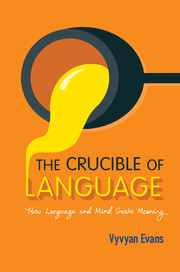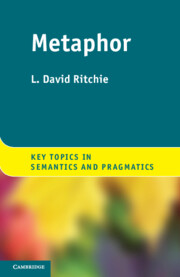Feeling, Thinking, and Talking
How the Embodied Brain Shapes Everyday Communication
$125.00 USD
- Author: L. David Ritchie, Portland State University
- Date Published: August 2022
- availability: This ISBN is for an eBook version which is distributed on our behalf by a third party.
- format: Adobe eBook Reader
- isbn: 9781108983938
Find out more about Cambridge eBooks
$
125.00 USD
Adobe eBook Reader
Other available formats:
Hardback
Looking for an inspection copy?
This title is not currently available on inspection
-
The way the brain, body, and mind interact with social structure to shape communication has so far not received the attention it deserves. This book addresses this gap by providing a novel account of communication as a social, biological and neurological force. Combining theories from communication studies and psycholinguistics, and drawing on biological and evolutionary perspectives, it shows how communication is inherently both biological and social, and that language and the neural systems that support it have evolved in response to a complex social environment. It introduces a clear set of terms based on current research, and illustrates key concepts using real-life examples from everyday conversation - speaking to a number of current debates around the evolutionary and biological basis of language, and the relationship between language, cognition, and environment. Thought provoking and engaging, it will change the way we think about the relationship between communication and cognition.
Read more- Clearly explains how neurology, evolution, and social structure interact in communication
- Introduces concepts using ordinary-language explanations and examples from actual conversations and discourse
- Provides a coherent framework for further reading and study in communication and related topics
Reviews & endorsements
'Feeling, Thinking, and Talking is an enlightening piece of work on the nature of communication, language, and cognition, written in accessible but, at the same time, expert language, constituting welcome reading material for both students and scholars in the fields of language and communication studies.' Ana Cristina Pelosi, Associate Professor of Linguistics, Federal University of Ceara - Brazil
See more reviews'Feeling, Thinking, and Talking takes a unique and integrative approach to the mechanisms, functions, and evolution of human communication … Served by a powerful use of thought-provoking footnotes, systematic indexing, and up-to-date references, this thorough conceptual analysis will resonate well with a broad readership, including ethologists, psycholinguists, neuroscientists, and evolutionary biologists … Recommended.' J-B. Leca, Choice
Customer reviews
Not yet reviewed
Be the first to review
Review was not posted due to profanity
×Product details
- Date Published: August 2022
- format: Adobe eBook Reader
- isbn: 9781108983938
- availability: This ISBN is for an eBook version which is distributed on our behalf by a third party.
Table of Contents
Preface: The genesis and intentions of this book
1. The embodiment perspective
2. Homeostasis: Perception, feelings, and signaling
3. How language and conversation evolved
4. Thinking: Using and understanding language
5. Emotion
6. Signals
7. Context
8. Relationships and groups
9. Conversation
10. Play
11. Metaphor
12. Humor and irony
13. Stories
14. Media technology, social reality, and discourse
15. Recap: Homeostasis and communication.
Sorry, this resource is locked
Please register or sign in to request access. If you are having problems accessing these resources please email [email protected]
Register Sign in» Proceed
You are now leaving the Cambridge University Press website. Your eBook purchase and download will be completed by our partner www.ebooks.com. Please see the permission section of the www.ebooks.com catalogue page for details of the print & copy limits on our eBooks.
Continue ×Are you sure you want to delete your account?
This cannot be undone.
Thank you for your feedback which will help us improve our service.
If you requested a response, we will make sure to get back to you shortly.
×







